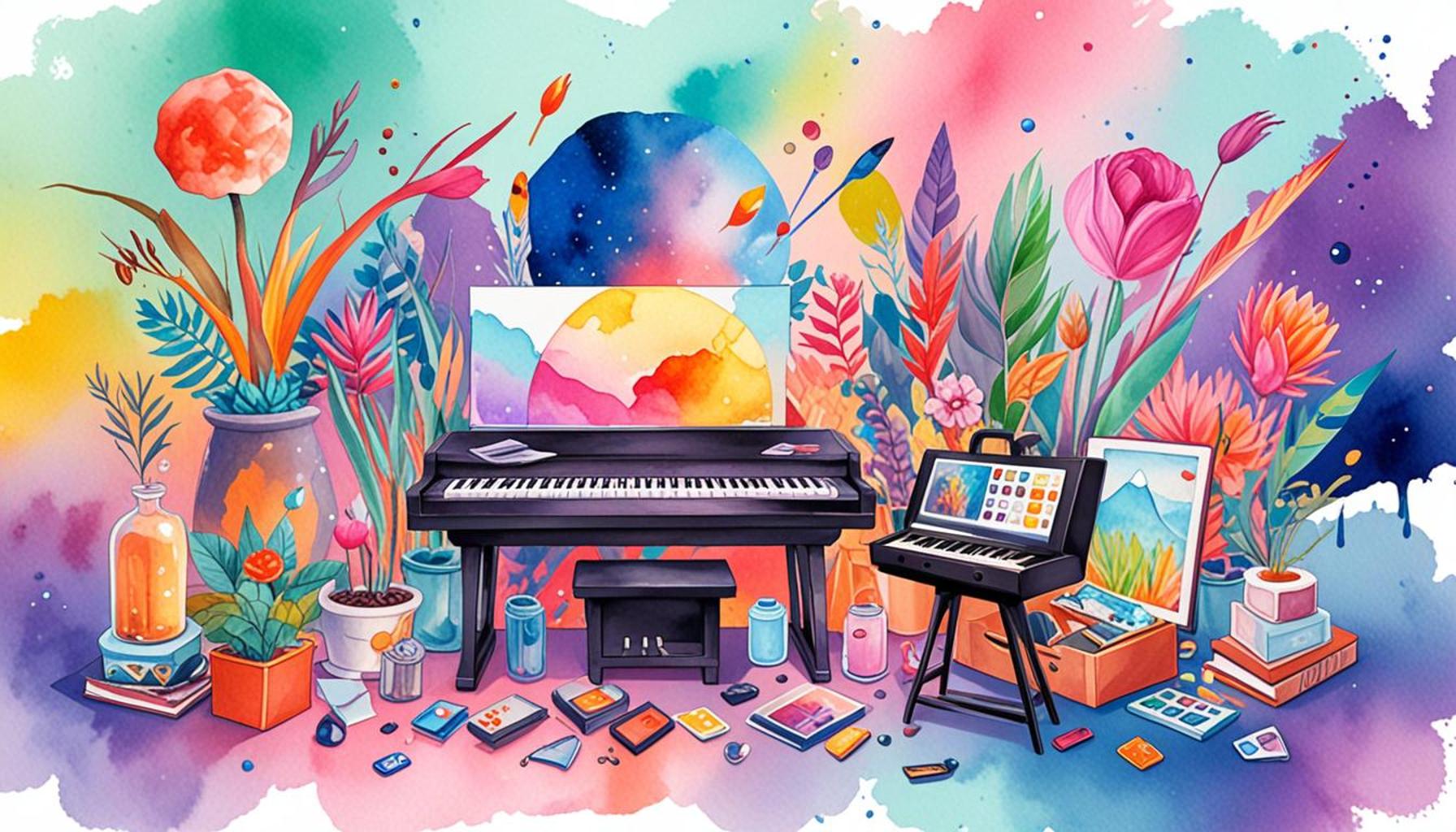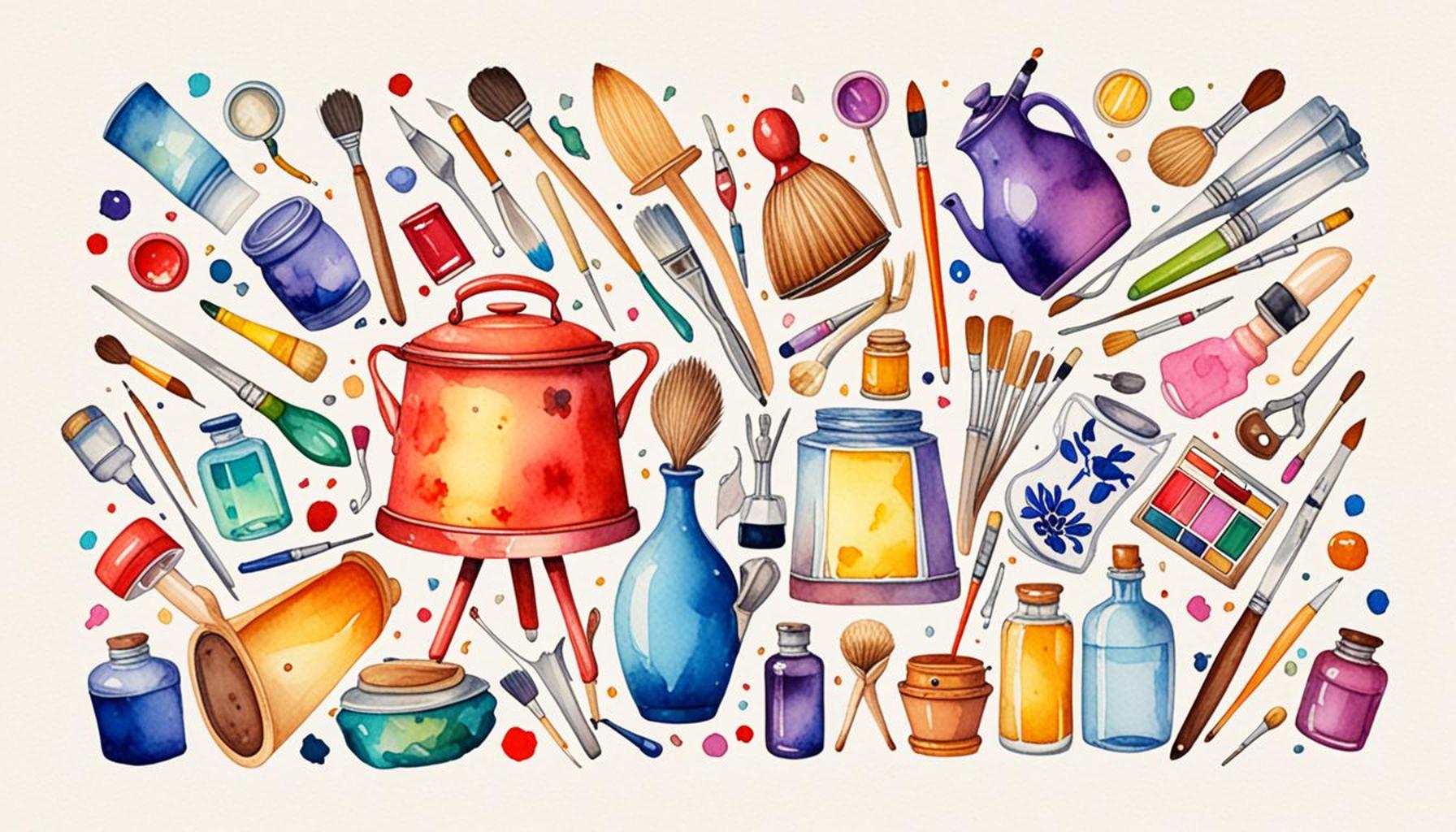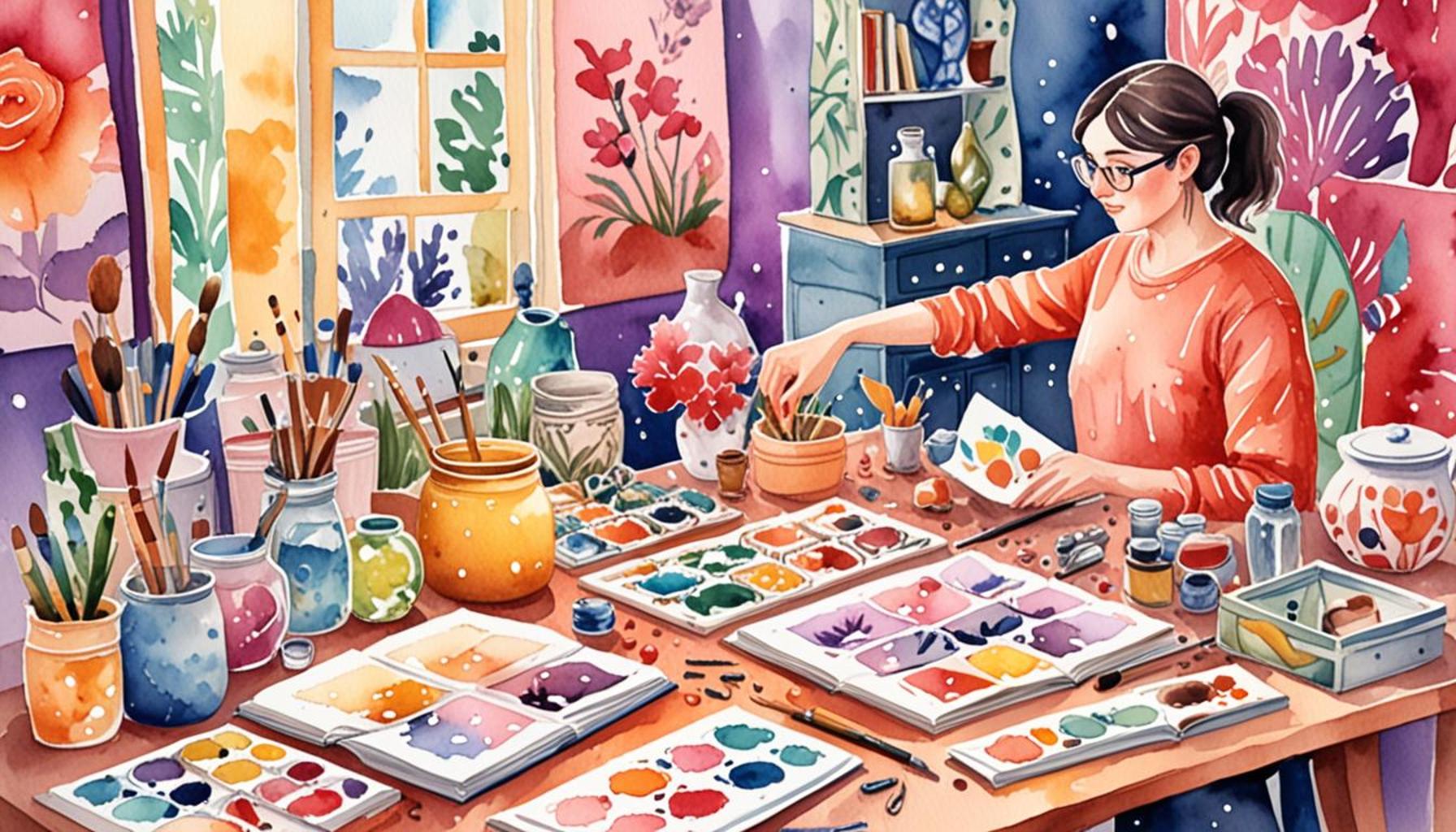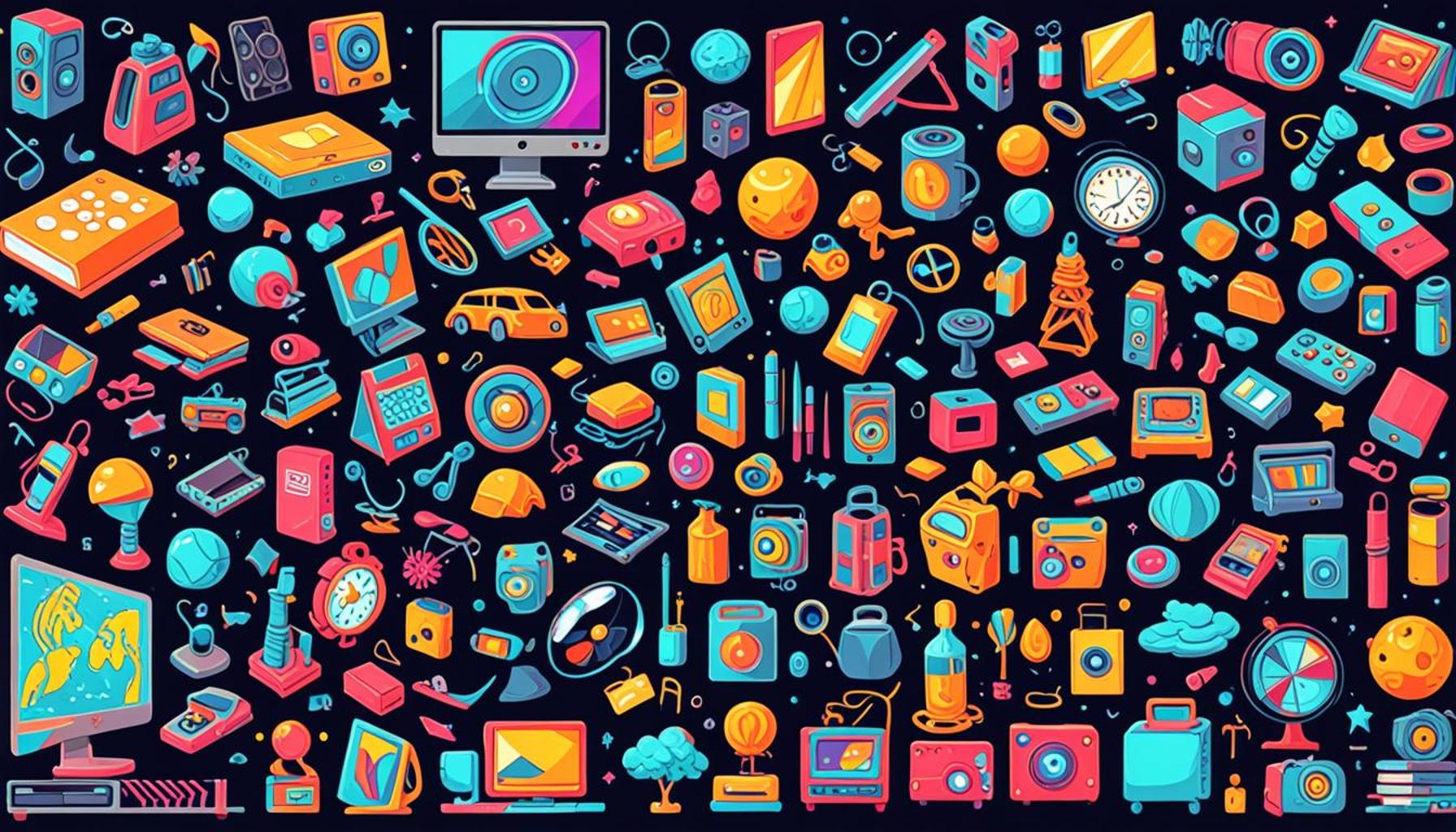Digital Collecting: The New Frontier of Virtual Collections and NFTs

The Transformation of Collecting in a Digital Age
The rise of digital collecting has revolutionized the landscape for enthusiasts who curate collections, shifting the focus from tangible items to their virtual counterparts. Central to this modern collecting phenomenon is the emergence of Non-Fungible Tokens (NFTs), which have fundamentally altered the very nature of ownership in the digital realm.
In the past, collectors were mostly confined to physical objects like stamps, coins, or paintings. The advent of digital technology has expanded this horizon significantly. Now, the digital realm offers diverse collectible options, including:
- Art: Unique digital artworks, ranging from GIFs to psychedelic animations, created by both famous artists and up-and-coming creatives. Platforms like SuperRare and Nifty Gateway provide a showcase for these talented individuals, allowing collectors to own distinct pieces that represent their personal tastes.
- Virtual real estate: In metaverse platforms such as Decentraland and The Sandbox, users can buy, sell, and develop parcels of virtual land. These digital properties can appreciate in value, much like physical real estate, presenting lucrative investment opportunities for savvy collectors.
- Music and multimedia: NFTs are reshaping the music industry by allowing artists to sell exclusive rights to their songs, albums, and interactive experiences directly to fans. Musicians like Grimes and Kings of Leon have already ventured into this space, showcasing the potential for direct artist-to-fan relationships.
The methods for acquiring and trading these collectibles are also evolving rapidly. Emerging platforms such as OpenSea, Rarible, and Foundation serve as bustling marketplaces where individuals can explore various NFTs, share knowledge, and transact with ease. They not only facilitate buying and selling but also emphasize community, allowing users to engage in discussions about trends, values, and recent acquisitions.
Furthermore, the allure of digital scarcity—the idea that each NFT is a unique asset secured by blockchain technology—heightens the value of digital collectibles. Each token represents a one-of-a-kind item, ensuring that collectors have genuine ownership of their virtual treasures that cannot be replicated.
However, this rapidly evolving landscape raises pertinent questions about the sustainability and future of digital collectibles. As more individuals and brands embrace NFTs, understanding the implications of this trend becomes essential for anyone interested in the future of collecting. With ongoing developments and a growing community embracing digital collectables, the exploration into this new frontier appears both thrilling and complex.

As the market continues to expand, those looking to delve deeper into the world of digital collectibles must navigate its intricacies, staying informed about technological advancements and cultural shifts influencing this fascinating realm.
Dive deeper: Click here to enhance your workout with music
The Diverse Landscape of Digital Collectibles
The world of digital collectibles has quickly gained momentum, establishing itself as a dynamic and transformative sector within the broader collectibles market. Unlike traditional collectors, who often pursued items with historical significance or aesthetic value, modern collectors are increasingly drawn to unique digital tokens that can carry immense cultural, artistic, or even financial significance, as evidenced by the recent skyrocketing value of high-profile NFTs.
One of the most compelling aspects of this new frontier is the sheer variety of collectibles available to enthusiasts. From the whimsical animations gracing online galleries to technologically advanced blockchain assets, the range of options is as expansive as it is exciting. Here are a few key areas within the digital collecting sphere:
- Gaming Assets: Many popular video games now incorporate NFTs as part of their ecosystems. Players can buy, sell, and trade unique in-game items or characters, which often possess real-world value beyond just entertainment. Titles like “Axie Infinity” and “Gods Unchained” exemplify this trend, enabling gamers to earn income through gameplay while building their digital collections.
- Digital Fashion: Fashion labels are increasingly participating in the digital realm by creating virtual clothing and accessories for avatars in games and social platforms. Platforms such as DressX allow users to purchase and wear digital outfits that express their personal style without any impact on the physical world. This unique blend of creativity and technology showcases the diverse avenues of self-expression available to collectors.
- Memorable Moments: The rise of moments collections, such as NBA Top Shot, has introduced a new way for fans to own limited edition highlights from their favorite sports. These NFTs allow sports enthusiasts to purchase, trade, and showcase their prized moments, creating a sense of community and ownership among fans.
As digital collectibles gain traction, so do the communities surrounding them. Enthusiasts flock to forums and social media platforms to discuss the latest trends, notable sales, and upcoming releases. Websites like Discord and Twitter have become virtual meeting grounds, where collectors share insights, experiences, and even investment strategies tailored to this evolving market.
Importantly, the growing concern over the environmental impact of NFTs and blockchain technologies cannot be ignored. As awareness regarding sustainability issues increases, many creators and platforms are seeking ways to mitigate their carbon footprints. The advent of eco-friendly blockchains presents an opportunity to address these challenges and ensure the future of digital collecting is both innovative and responsible.
This intersection of luxury, technology, and community fosters an engaging environment for collectors to explore. As the digital collecting space continues to expand, potential buyers and enthusiasts are advised to remain vigilant and informed, ensuring they navigate this complex yet exhilarating landscape with care and insight.
| Advantages of NFTs | Impact on Collecting |
|---|---|
| Unique Ownership | NFTs provide proof of authenticity and exclusive ownership of digital assets. |
| Fractional Ownership | Buyers can invest in costly collectibles through shared ownership, lowering entry barriers. |
| Decentralization | Blockchain technology ensures an open marketplace free from traditional gatekeepers and restrictions. |
| Global Reach | Collecting and trading NFTs can occur across international borders seamlessly. |
The evolution of digital collecting through NFTs paves the way for a shift in how we view ownership and value. Owning a digital collectible, once merely a concept, has now become a tangible investment opportunity with real financial implications. The ability to verify ownership using blockchain ensures that collectors can also advocate for their investments confidently. Furthermore, the impact of fractional ownership opens doors for individuals who may have been excluded from traditional markets, democratizing access to prestigious collections. This trend also reflects a broader cultural shift emphasizing access over possession, significantly altering perceptions about what it means to collect. As NFTs continue to gain traction, their role in redefining assets extends beyond art and memorabilia, venturing into real estate and gaming, unleashing a potential renaissance in asset management. Collectors and investors alike must stay informed about these rapid developments to seize new opportunities in the transforming landscape of digital collections.
DIVE DEEPER: Click here to uncover the blend of wellness and creativity
The Economic and Cultural Impact of Digital Collecting
The rise of digital collectibles and NFTs has not only opened new avenues for revered collectors but has also introduced significant economic shifts across various industries. As more creators, brands, and celebrities embrace this digital frontier, the implications reach far beyond the nuances of ownership and value. Understanding these profound influences is essential for navigating this burgeoning landscape.
Firstly, the financial aspect of digital collecting has transformed how people view investment opportunities. In 2021, the NFT market exploded, generating over $10 billion in sales within just a few months. This seismic growth indicates a burgeoning demand for unique digital assets, coupled with a newfound support for artists and creators who can monetize their work through blockchain technology. Many digital artists, previously reliant on traditional forms of income, are now auctioning their pieces as NFTs. This has led to remarkable sales, with one digital art piece by Beeple fetching a staggering $69 million at Christie’s, illustrating the potential of NFTs to redefine artistic valuation.
Moreover, the growth of digital collecting has fostered new business models. Leading brands, from Nike to Gucci, are exploring the integration of NFTs into their marketing strategies. For instance, Nike patented a system called “CryptoKicks,” designed to verify the authenticity of their sneakers through blockchain technology. This not only adds value to digital ownership but also establishes a layer of trust between consumers and brands in the digital sphere. The conventional retail landscape is adapting, with physical items being paired with digital twins, thereby increasing their desirability and marketability.
As digital collectibles capture the public’s imagination, they also catalyze cultural shifts regarding community and identity. Collectors often bond over shared interests—whether it’s fandom for a specific game, love for a particular artist, or enthusiasm for a sports moment. These communities emanate a sense of belonging, transcending geographical boundaries. NFTs have created virtual spaces where fans come together not only to trade items but to foster discussions about their significance. Platforms like OpenSea and Rarible have become the meeting points for collectors eager to showcase their portfolios and connect with like-minded individuals.
- Art and Expression: The digital art scene is flourishing, with artists leveraging NFTs to challenge traditional paradigms of creativity. Artists are not just creating; they are building entire ecosystems around their work, offering exclusive experiences to collectors, which might include private virtual gallery events or personalized commissions.
- Philanthropy and Social Good: An emerging trend in the NFT space is the use of proceeds from sales to support charitable causes. For example, when the prominent artists sell their NFTs, they often allocate a portion of earnings to social initiatives, thus intertwining art with activism.
- Virtual Real Estate: The concept of virtual land within metaverse platforms like Decentraland and The Sandbox is evolving the notion of ownership. Investors are purchasing, selling, or renting virtual plots, showcasing how digital spaces can command significant monetary value and redefine the concept of ‘property.’
As digital collectibles integrate into various facets of our lives, the challenge remains to strike a balance between innovation and sustainability. Sustainability in technology, particularly regarding energy consumption associated with blockchain networks, is being addressed by several platforms spearheading eco-conscious initiatives. For the future of digital collecting to thrive, addressing these environmental concerns must remain a priority.
Understanding and engaging with the growing world of digital collecting is not merely about acquiring trendy assets but about embracing a cultural evolution driven by creativity, community, and economic opportunity. The future of this market holds untold potential, inviting explorers from every walk of life to partake in its unfolding story.
DIVE DEEPER: Click here to discover how technology shapes art
Embracing the Future of Digital Collecting
As we stand on the threshold of a new era defined by digital collecting and NFTs, it is clear that this revolution extends far beyond mere novelty items or speculative investments. The digital landscape is reshaping our understanding of ownership, creativity, and community engagement. By transforming how collectibles are defined and valued, NFTs democratize access to art and culture, allowing a broader audience to participate in the creative economy.
The rapid growth of the digital collectibles market—evidenced by over $10 billion in NFT sales within months—illustrates the profound economic potential of these assets. Major brands are recognizing this shift and are innovatively integrating NFTs into their business models, further solidifying the intersection of commerce, art, and technology. This intersection is not only fostering entrepreneurial opportunities but also creating new revenue streams for artists and creators who previously faced limited avenues for earning.
Furthermore, engaging with the digital collecting community offers individuals a chance to connect beyond geographical divides. As trends like virtual real estate and art activism gain traction, enthusiasts are invited to explore the unique identities and narratives that these digital assets convey. However, as we embrace this frontier, it remains paramount to address key challenges such as sustainability and environmental impact, ensuring that this burgeoning market grows responsibly.
In conclusion, the world of digital collecting and NFTs is more than an evolving marketplace; it is a manifestation of cultural evolution that encapsulates creativity, community, and economic possibility. As we unveil this digital tapestry, there lies an invitation for all—whether casual collectors or seasoned investors—to unravel the intricate stories waiting to be told. Now is the moment to venture into this dynamic arena and discover what treasures await.


